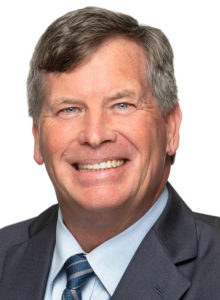By David Woltering, AICP, June 24, 2020
DESPITE THE OCCASIONAL CHALLENGES we planners experience, our profession is a noble one, and it can be immensely satisfying. Over the past 35 years, the planning profession has given me the opportunity to help communities articulate and meet their goals for growth and preservation. I’m tremendously grateful to work in such an extremely interesting field, involving many disciplines, with the objective of creating and maintaining safe, healthy, and livable communities for all people.

The path taken
In 1977, I graduated with a BA in political science from UC Santa Barbara and was hired by a Menlo Park transportation consulting firm to assist with a San Francisco Bay Area Paratransit study. There I met staff members with backgrounds in geography and city and regional planning. Inspired by these co-workers, I went back to school and completed coursework in city and regional planning and geography at San Francisco State University. Years later, in 2009, I earned a master’s degree in public administration from the University of San Francisco.
I’ve worked in community development/city and regional planning since 1984. I joined the American Planning Association in 1985, and became a certified planner in 1990. My work has mostly been for small northern California communities with populations less than 25,000 — Los Altos Hills and San Carlos (Contract Planner, 1984-87), Rocklin (Principal Planner, 1988-93), Windsor (Planning Director, 1993-99), Cotati (Director of Planning, 2001-2008), Clayton (Community Development Director, 2008-2013), and San Bruno (Community Development Director, 2013-2018). Each presented unique challenges and had set important goals to meet.
A trying night
In the late 1980s, I invited my brother, a journalist from New Orleans, to attend a public hearing in Rocklin where I would be presenting a citywide transportation improvement plan for the city. Rocklin’s population was just under 20,000 (it’s now about 70,000), and planning for future growth of the huge Stanford Ranch area and the broader community was underway. Many residents had mixed views about the current and projected growth in that area and the transportation improvements needed to accommodate that growth.
The standing-room-only meeting lasted for hours. As a key staff presenter, I was grilled by councilmembers and endured a number of harsh comments from the public. I maintained my composure and stayed professional while my consultant and I responded to questions. Despite the difficult meeting, the city council unanimously approved the citywide transportation improvement plan.
Afterwards, my brother shook his head and energetically asked, “Why in hell did you ever choose this profession? I was about to throttle some of those people for what they were saying to you, but somehow you remained calm. How do you do that?” I responded that change makes some people uncomfortable. My job is to stay calm, communicate information as clearly and accurately as possible, acknowledge and understand the various concerns, and help find solutions to meet the community’s needs. That is the art of what we planners do. That also was the first and last of my public hearings my brother attended.
I have had two mantras during my 35 years in the planning profession: “finding a way through” and “the art of what we do.”
Gaining knowledge
As an entry-level planner, I enjoyed being assigned to smaller communities because I worked directly with city managers and various department directors including police, fire, public works, planning, and building. I learned about the organization’s operations and interactions among city council members, planning commissioners, and citizens. I saw the direct connection between staff actions and their results in the communities. I became knowledgeable about entire communities, their properties, people, and traditions. Compare that to working in a larger community where I might have gained similar knowledge, but of only a district or segment of the city.
My entry-level efforts for the communities of Los Altos Hills and San Carlos gave me experience in current planning, development review, advanced planning, general plans, specific plans, and zoning codes. It was satisfying work to create livable, well designed, efficient, sustainable, and aesthetically pleasing communities.
Each community I have worked for has had its challenges: Windsor was drafting its first general plan; Clayton was deciding the Town Center land use and distribution; San Bruno was determining the mix of commercial and housing (and parking standards) for a Transit Corridors Specific Plan. I watched, listened, and advised as the elected officials made their decisions. We work in political environments, but in our role as professional planners we can encourage broad-based participation and ethical processes in the decision-making.
A significant transition
A milestone in my career came in October 2018 when I retired as San Bruno CDD. Since retiring, I have assisted Clayton and Healdsburg as Interim CDD, where I’m addressing challenges ranging from staffing issues to “finding a way through” on complex development projects.
Over the years, I have assisted in preparing general plans, specific plans, and land use (zoning) codes; and have dealt with controversial private development projects, difficult code enforcement cases, and challenging circumstances involving staff and decision-makers. I learned from others, shared my knowledge, contributed to making a difference, and developed a network of friends and colleagues who, like me, are passionate about public service.
Grateful for lessons learned
In our line of work, we are stewards of the urban environment. We address the challenges our communities face and help them achieve their core objectives — creating and maintaining livable communities. Our work extends from visioning to adoption to implementation of the plans that will guide our communities. As planning professionals, we use our learned principles to help guide constructive, knowledge-based, and inclusive decision-making. We offer ethical, professional, and well-researched recommendations. And we offer fair-minded solutions to real problems.
Although challenging at times, I am incredibly pleased and grateful to be in this profession. I highly recommend it to others who seek an interesting career, working to make communities safer, healthier, and livable for all, with real opportunity to make a meaningful difference.

